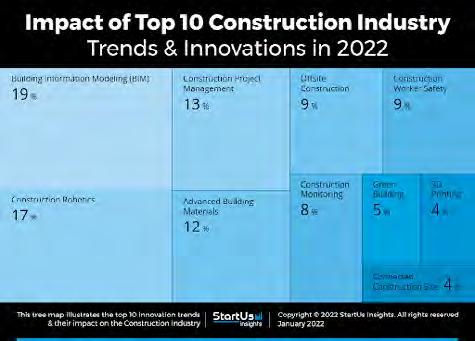4 minute read
Six Ways to Bring Your Payment Protection Practices into the Modern Age
FEATURE
Six Ways to Bring Your Payment Protection Practices into the Modern Age
by Patrick Hogan, Handle.com
The construction sector is notorious for payment issues, and there are various factors that contribute to this reputation. For instance, the industry’s complicated contracting hierarchies create a complex payment process that often results in payment disputes. Unpredictable economic conditions also introduce unforeseeable financial challenges, resulting in payment bottlenecks.
It is therefore necessary for every construction company to be proactive in protecting their cash flow. Taking advantage of modern advancements is one of the smartest moves to do, especially if you wish to simplify and improve your existing methods.
In today’s age, there are numerous ways to implement payment protection practices using advanced technologies. Below are six tips to protect your cash flow while keeping up with the advancements of the modern age:
1. Implement a paperless invoicing system
Going digital is one of the first steps you need to do to improve your current practices, especially when it comes to invoicing. If you are still using paper invoices, you are more likely to lose track of your invoices. The turnaround time for communicating with your clients and receiving payment are also longer when using paper.
By employing a paperless invoicing system, you can easily track your invoices and your payments. You can also track which invoices are overdue, allowing you to send payment reminders to your clients if necessary.
2. Use notice management applications
Managing your pre-lien notice requirements can be daunting, especially if you are working on multiple projects. It can be difficult to track which projects require a preliminary notice and which ones do not. The challenge becomes even more pressing if you can keep in mind that failing to serve a preliminary notice when required can result in losing your lien rights.
Using an app for notice management is, therefore, highly recommended. Doing so will significantly improve your entire work process as you won’t have to worry about sending a notice on time or making sure that you use the correct regulatory template.
3. Centralize all paperwork in one accessible location
Ideally, you have all your paperwork consolidated in one place so every stakeholder can access the necessary documents and files without causing communication disputes. Doing multiple data entry work can also cause errors, which is why it is important to have all your systems integrated seamlessly.
Invest in a software that will allow you to integrate your invoicing processes with your accounting systems. Preventing data entry errors, especially when it comes to payments, will help you protect your cash flow better. Having an integrated system will also minimize the potential for payment disputes.
4. Allow online payments for all invoices
Most payment transactions today can be done online. You should therefore also allow your clients to pay their invoices online, keeping in mind that implementing a quick and convenient payment method is a big incentive for your client to pay on time.
However, cybersecurity is a huge issue when it comes to online payments. Make sure to invest in a strong encryption service to ensure that your clients’ payment data are protected. This investment may initially appear unnecessary; however, it will be worth it once your clients start paying on time more often.
5. Allow multiple payment types
Online payment is one option, but you should also allow other payment types, from credit card transactions to bank cheques. Even though the world is increasingly moving over to the digital space, you should remain flexible to accommodate all clients.
The key, however, is to have a robust process to track all payment types. Make sure that your invoicing system is integrated with your accounting software to prevent double-counting payments, especially when you are tracking multiple payment streams.
6. Automate deadline tracking
The construction business is governed by deadlines. There are project milestones to track, notice deadlines to worry about, and payment schedules to monitor. To better protect your cash flow, you should have a system in place that helps you track all these deadlines automatically, especially the deadlines that are payment-related.
For instance, you may want to know if you need to file a mechanics lien to recover an overdue invoice. You may also want to know if there's an impending payment deadline so you can remind your client to pay up. Having an automated process to track all these deadlines will help you manage your cash and mitigate any issues that can cause bigger problems along the way.
At the end of the day, using advanced technologies wisely is one of the smartest ways to ensure you get paid on time. Ultimately, taking advantage of automation software and hi-tech applications will help you protect your cash flow and propel your business forward.
About the Author:
Patrick Hogan is the CEO of Handle.com, where they build software that helps contractors, subcontractors, and material suppliers with late payments. Handle. com also provides funding for construction businesses in the form of invoice factoring, material supply trade credit, and mechanics lien purchasing.









